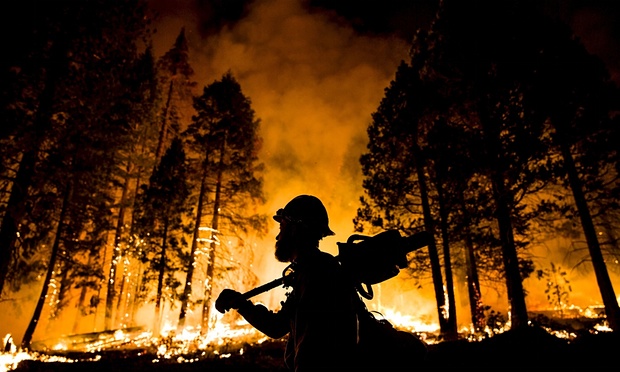A new paper was just published which provides a glimpse into the future of wildfires. The paper is titled “Extreme fire season in California: A glimpse into the future?” It was published as the second chapter of “Explaining Extreme Events of 2014” which is from by the American Meteorological Society and it is available here. The lead-in summary to the article is very much to the point. It states,
The fire season in northern California during 2014 was the second longest in terms of burned areas since 1996. An increase in fire risk in California is attributable to human-induced climate change.
The authors, Jin-Ho Yoon and colleagues make the point that California has been under drought conditions since 2012 and that the drought worsened recently. As is obvious, drought exacerbates the threat from wildfires. Last year, the California Department of Forestry and Fire Protection saw many more fires than have occurred in the prior five-year averages.
While the influence of drought and wildfires may be obvious, the authors bring some important and sometimes subtle insights. For instance, in a warming world, we also expect more rainfall. So it stands to reason that fires may actually decrease. So which effect wins out? The warming or the wetting? Also, how do the decreasing snowpack or early snowmelt factor in?
The authors pursued their investigation by comparing satellite images from burned areas with a drought index. The drought index (Keetch-Byram Drought Index, or KBDI for short) is created from both observed and calculated daily precipitation and surface temperatures. In the investigated region of northern California, both the drought index and the regions of extreme fire risk have increased steadily since 1979. In both measures, 2014 was top for northern California, but also for the entire state. The authors also note that the two largest burned areas in northern California in the last 18 years occurred in 2012 and 2014.
The authors then project into the future and ask what the current trends portend over the next few centuries. The predicted results are striking. We can expect to see increases in the drought index, the area under extreme threat of fires, and the days of fire danger. The following statement from the report provides a great summary.
The increase in extreme fire risk is expected within the coming decade to exceed that of natural variability and this serves as an indication that anthropogenic climate warming will likely play a significant role in influence California’s fire season.
But, what we do now will affect how bad things get in the future. By taking actions like President Obama’s rejection of the Keystone XL pipeline, we can lower our threat to a more manageable level.
(Source: theguardian)
